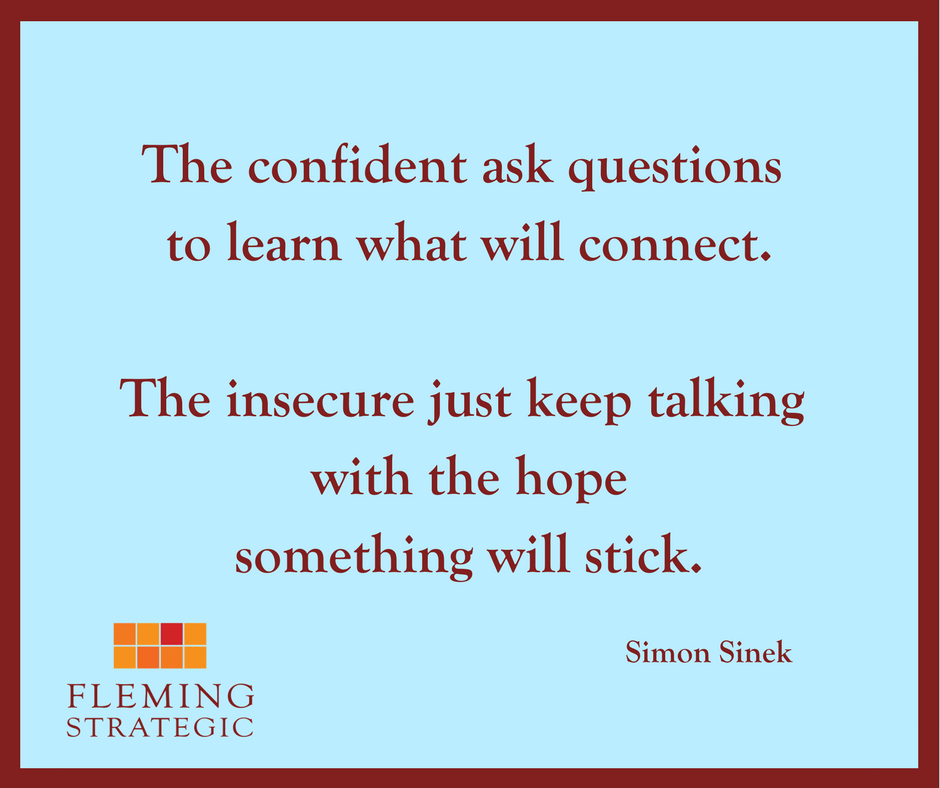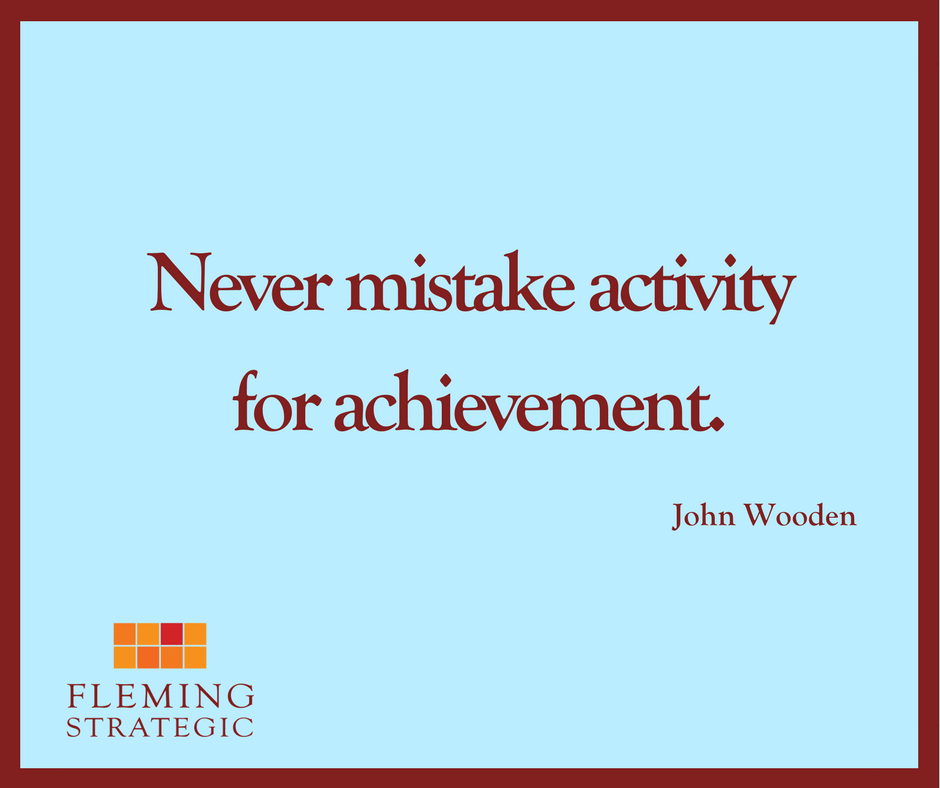This is a longer article than usual, but if you’d like a step-by-step outline on how to get value from attending meetings and conferences, it’s worth your time to read. (1741 words, about five minutes to read)
Attending a conference can be of high value for business development, or it can be an expensive undertaking with disappointing results. Some of that is out of your control—if, for instance, conference attendance is surprisingly low for reasons neither you nor the planners could anticipate. However to a large degree, your actions and decisions control the value you’re likely to receive.
It’s tempting to wait until the last minute to decide whether to attend a meeting (especially if it’s local), but that will decrease your ability to create success. Decide as early as you can, and block the time off on your calendar. That allows you to spread out your advance activity, which increases the likelihood that you’ll complete it and also leaves room for serendipity.
For example, I recently put two meetings on my calendar. One, I will attend; the other, I likely won’t. Here are the steps I went through:
- Calendar the event. That’s obvious, but setting it on the calendar also let me get an idea of how far away they are and what I have going on in between, which allows me to watch for synchronicities and challenges in scheduling.
- Ask, what else I should schedule along with the event itself? For example, one of the events I calendared is the ABA Annual Meeting in NYC. Here’s what I thought through:
- Should I plan to meet with anyone else while I’m in town? This is a good opportunity to visit clients and potential clients as well as various other contacts. Calendar the calls or emails to get those meetings set up.
- Should I consider scheduling anything else during that trip? Might you have an opportunity to attend another meeting, to arrange a speaking engagement, to meet with colleagues in your firm’s local office, etc.?
- Should I make sure to call anyone while I’m in town, even though there won’t be an opportunity to get together? Make that list now, not when you get to the conference.
3. Ask, can I make any contacts before the conference? If you know people who are likely to attend, reach out before the meeting to see whether in fact they’re planning to be there. That may be the logical next step to suggesting coffee or a meal together, or it could be a nice pre-conference connection to ease into conversation when you meet in person.
If you’re active on social media, consider sharing information about the conference online and asking if others are planning to attend. Some of your contacts might decide to join you, and strangers who have already made their plans may respond, leading to new connections. This is an especially nice tactic for introverts, because it increases the likelihood that you will know a few people before you get to the meeting, and online conversations can easily segue into face-to-face discussion. Be sure to use the appropriate hashtag for the conference, if one has been defined. Hashtags often appear in promotional materials, including the conference website and using them will help you to find other attendees.
4. Ask, who else needs to know about this conference, and how can I help spread the word? You can always share information about the meeting, though you may choose not to. The meetings that I calendared recently are offered by the ABA Section of Science and Technology, and since I’m an officer in that Section, I have both the responsibility and desire to share information about programs we host or sponsor. (Pro tip: even if you have no responsibility, if an organization with which you’re actively involved is hosting the event, share! It won’t hurt, and it might help both with attendance, which is always an issue, and with your own name recognition.)
Calendar whatever you will do to help, counting back from the date of the conference. Helping might include making phone calls or forwarding a copy of the program announcement to people who might like to attend, listing the conference in your own newsletter or blog, or contacting a local group that might want to share information about the conference with its members. Think about your help in two buckets: one-to-one invitations (conversation and emails) and group invitations (such as forwarding information to the contact for a group or sharing information on social media).
For example: the Second Annual Internet of Things National Insitute was held in Washington, DC on May 10 and 11. 2017. The previous year’s National Institute was a smashing success, and I’ve listed a number of people to invite individually to attend this year’s conference. As the time draws closer, I’ll share information about the National Institute and topics to be addressed on social media as well. I’ve also shared sponsorship information with several firms and businesses who might like to be visible to the attendees. (If you’re coming up blank with people to invite, note that many conferences have a “Who Should Attend?” section on the website or in the brochure that may help you. See, for example, the image on the right, from the 2016 National Institute.)
If you have a special connection to a sub-part of a meeting (for instance if a speaker is a valued contact), you can share that specific information. As the August ABA Annual Meeting approaches, for example, I will invite contacts who are interested in the law as it relates to technology and music to Unblurring the Lines: Navigating the Complex Relationship Between Technology, Music and Copyright Law and those interested in cyber-security to a program on that topic, to be followed by Cyber Security Scorecard for the 45th Presidency, which may also appeal to those especially interested in governmental aspects of cyber-security.
Planning this kind of outreach early is critical. It ensures that you have the relevant information ready to go and that you have the time to come up with the right people to invite. If you’re planning to share anything about the conference or subparts of it via social media, you’ll also create a buffer that gives you time to reach out to or connect with speakers on social media. Share information about a conference exclusively because you have the full expectation that it will be excellent. After all, why would you attend if that isn’t your expectation? When you do share information, especially about a specific presentation, you can tag the speaker—which allows your audience to find out more about him or her and may also let the speaker know that you’re telling others to attend, which could help you to make a useful connection.
Be sure to schedule your outreach on your calendar, so you hit the sweet spot of sharing information soon enough for people to attend or sponsor if they so choose, but late enough that they don’t delay in making a decision. Somewhere in the 4-6 weeks pre-event range is generally about right.
5. What follow-up should I plan, and what do I need to do in advance to be sure I can do this effectively? If there’s one single place where success is made or lost, it’s in the follow-up. Much of the follow-up activity you’ll do will depend on who you meet and what you discuss, but you can prepare for certain aspects.
- Prepare any materials you might want to offer. You might want to prepare a well-formatted and branded copy of a few articles you’ve written that you expect to come up in conversation because they’re relevant to the meeting in some way. You might want to have a single-sheet description of your firm and/or practice. Or you might simply want to be sure that you have plenty of note paper for follow-up notes.
- Calendar time to do the follow-up. That means that you need to know in advance what you’re going to do, perhaps including sending LinkedIn connection invitations to new contacts, adding new contact information to your database along with notes you made after meeting them, and sending the materials you promised. You may not know full details, but have a plan in mind. Block out time on your own calendar, or talk with an assistant in advance to plan deadlines for him or her to do the administrative part of this.
- Set a reminder for the questions you won’t be able to answer until after the event, such as:
- Should I send thank-you notes to speakers or anyone else?
- Is there anyone who was planning to attend but didn’t make it, and should I follow up with him or her?
- Is there anyone who was there that I didn’t get to meet who would be a particularly good contact? How can I follow up with that person?
- What did I learn that would be of value to a client or other contact, and how can I best share that information?
- What did I learn that I could work into an article, a presentation, a newsletter, etc?
This process will complete the advance strategic planning for attending a conference, and it can take time to execute effectively. For example, if you’re hoping to add a speaking engagement to a trip to attend a conference, begin trying to arrange that at least six months in advance. Don’t give up hope if you don’t have that much time to plan, but creating the greatest opportunity for success means giving yourself that window or longer. Going through these five steps will take some time and doing the work that you identify as a result will take longer, so it’s important to give yourself as much lead time as you reasonably can.
Finally, remember to leave time close to the meeting for your tactical planning. That should include actions such as making plans for one-on-one or small group time with other attendees (even if you can’t identify them until you’re on-site), making a list of whom you want to meet by name or profile, and knowing how you want to introduce yourself.
The first and easiest step in conference attendance is deciding to attend the conference; the subsequent steps are the ones that will make that first step and the much more expensive step of actually attending worthwhile. And note that, although my suggestions in this article are directed to large conferences, you can and should use the same framework for attending even smaller, local meetings such as networking breakfasts and CLE programs. The time and intensity of effort will change, but the steps themselves are the same.


